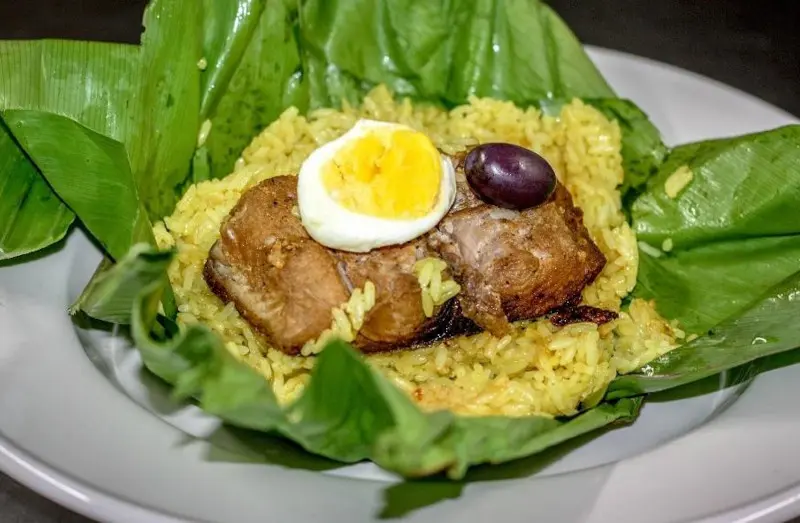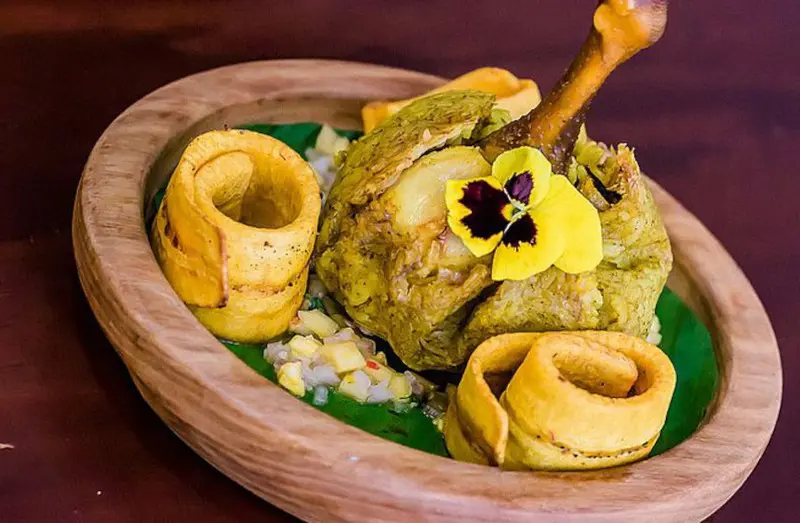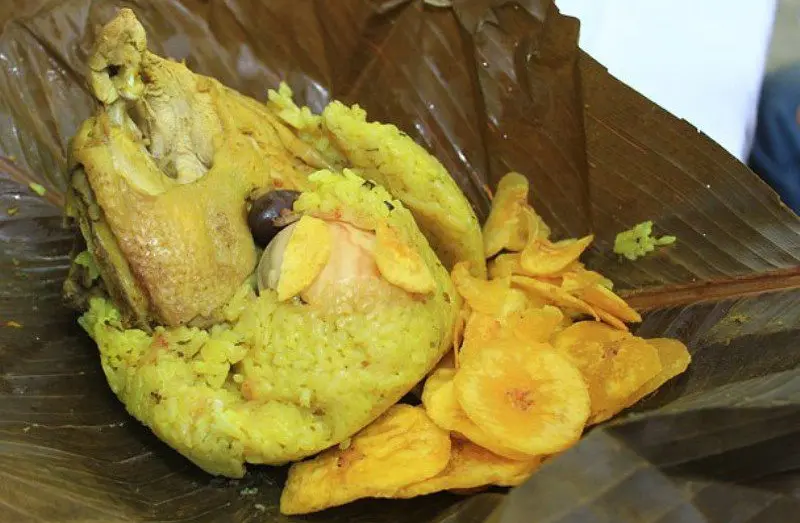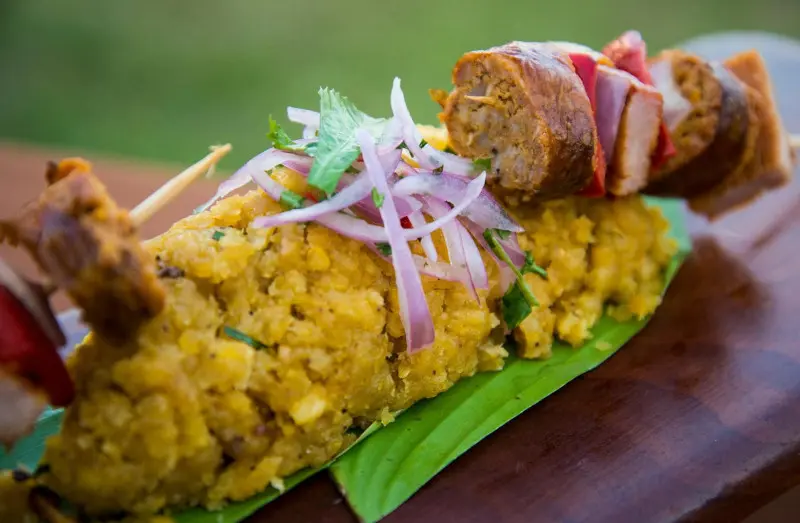What is known as Juane?
Juane is a traditional Peruvian rice dish that includes chicken, hard-boiled eggs, olives, and rice that has been seasoned with spices such as cumin, turmeric, and oregano to give it a yellow color.
This is wrapped in Bijao leaves (similar to banana leaves) and cooked to achieve the desired flavor. This traditional rice dish is sometimes served with boiled bananas or cassava.

The Origins of Juane: A Culinary Tradition
Juane is derived from the name “Juan” and the month “Junio” (June). It is strongly associated with the Feast of San Juan, but the dish’s origins are still debated.
Many people believe it originated in Spain and was named after John the Baptist. Some argue that this traditional Peruvian rice dish already existed due to the unique recipe of using bijao leaves. Bijao leaves are known as “huanar” by the Amazon’s indigenous people.

Where to Find Authentic Juane
Juane is typically served on June 24th during the Feast of San Juan, from which the dish derives its name.
Family and friends exchange gifts during the Feast of San Juan. They gather to prepare this mouthwatering traditional rice dish so that everyone can enjoy it at the end.
Juane dishes are also available at local restaurants and street vendors due to their popularity.

Some varieties are customized to the person’s needs. Avispa Juane, for example, is made from pork rather than chicken. It does not include hard-boiled eggs and olives.
Then there’s Nina Juane, which includes grilled chicken, eggs, and all of the traditional Juane ingredients.
The Chuchulli Juane is another version of this traditional rice dish. It has all of the same ingredients as the original, but instead of chicken breast, it uses chicken entrails.

The Sara Juane, which contains peanuts, corn, chicken broth, and sometimes Guinea pig meat, is one of the most unusual variations.
Some other countries have their own versions of the Peruvian Juane dish. In Colombia, for example, it is known as maitecusao, and in Bolivia, it is known as dunucuabi.
How to Prepare Juane: A Step-by-Step Recipe
- Take a pot, and add some oil and garlic. Then add water, and let it boil.
- After a while, add the rice and let it cook.
- When the rice is thoroughly cooked, transfer it to a separate bowl to cool at room temperature.
- In a separate pot, cook eight eggs in salted water.
- Set aside the eggs once they are fully cooked.

- Melt some butter in a separate pan. Then add the garlic, cumin, turmeric, onion, oregano, bay leaf, and salt to make it a spice mixture.
- Add the chicken pieces to the spice mixture and fry for a few minutes.
- Then add enough water and let it boil over medium heat.
- Remove the chicken pieces and stir in the rice and spice mixture.
- Next, divide it into eight rice potions and keep them in the center of each square Bijao leaf.
- To each potion, add a piece of chicken, an egg, and two olives.
- When one Juane potion is finished, tie the Bijao leaves from each side to the center with a string.
- Place these Juanes in a pot of boiling water for 45 minutes.
- Allow them to cool at room temperature after that.
- If you want to make it more traditional, serve it with boiled bananas or cassava.



